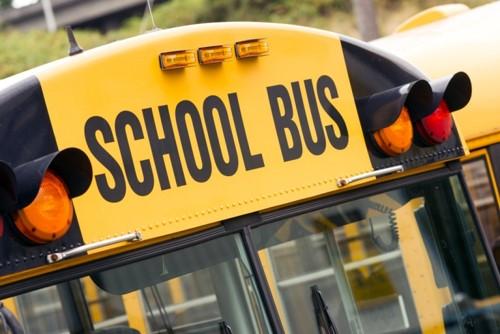Safety Tips for School Bus Drivers
For your safety as well as the safety of the children on your bus, always follow these recommended procedures at highway-rail grade crossings:
- Slow down, test your brakes and activate your four-way hazard lights about 200 feet before the crossing. (If your vehicle has a manual transmission, downshift before you cross.)
- Check for traffic around you. Make sure your intentions to stop are clear. Use a pull-out lane if one is available. Flashers, if necessary.
- Prepare the bus: Put the transmission in neutral, press down on the service brake or set the parking brakes (depending on your district’s policy). Turn off the AM/FM radio and all other noisy equipment; ask passengers for quiet.
- Stop where you have the best view of the tracks, no closer than 15 feet and no farther than 50 feet from the nearest rail. Check beyond the tracks for traffic congestion, a signal or stop sign. Be certain the containment area across the tracks is large enough to hold the entire bus, plus 15 feet.
- Open the service door and driver's window. Look and listen for an approaching train in both directions.Proceed only after checking the crossing signals.
- GO. When certain that no train is approaching on any track, do not hesitate. Cross in low gear and do not change gears while crossing.
Special Procedures
Police Officer or Flagman at the Crossing
Obey directions if there's a police officer or properly-identified railroad flagman at the crossing. If you believe the signals are malfunctioning and there is no flagman present, call your dispatcher, report the situation and find out how to proceed. Some crossings have an 800 number posted on or near the crossbuck for reporting problems; use that to quickly identify your location.
Obstructed View of Tracks
Plan your route so it provides maximum sight allowance at highway-rail grade crossings. Don't try to cross tracks unless you can see far enough down in both directions to know that no trains are approaching. Take extra caution at "passive" crossings without gates, flashing lights or bells. Even with active railroad signals indicating the tracks are clear, look and listen to confirm it's safe to proceed.
Containment or Storage Area
If it won't fit, don't commit! Know the length of your bus and size of the containment area at any highway-rail intersections along your bus route. Pay attention to the amount of available room when approaching a crossing with a signal or STOP sign on the opposite side. In case you need to stop, make sure the bus has enough containment or storage area on the other side to completely clear the railroad tracks.
Evacuating a Bus
If your bus stalls or is trapped on tracks, evacuate immediately. Get everyone off the bus, move far away from the tracks, but move in the direction from which the train is coming. This procedure will keep the evacuating students away from the point of impact between the train and the school bus.
School Buses
Each day, 480,000 yellow school buses travel the nation’s roads, according to the National School Transportation Association.
